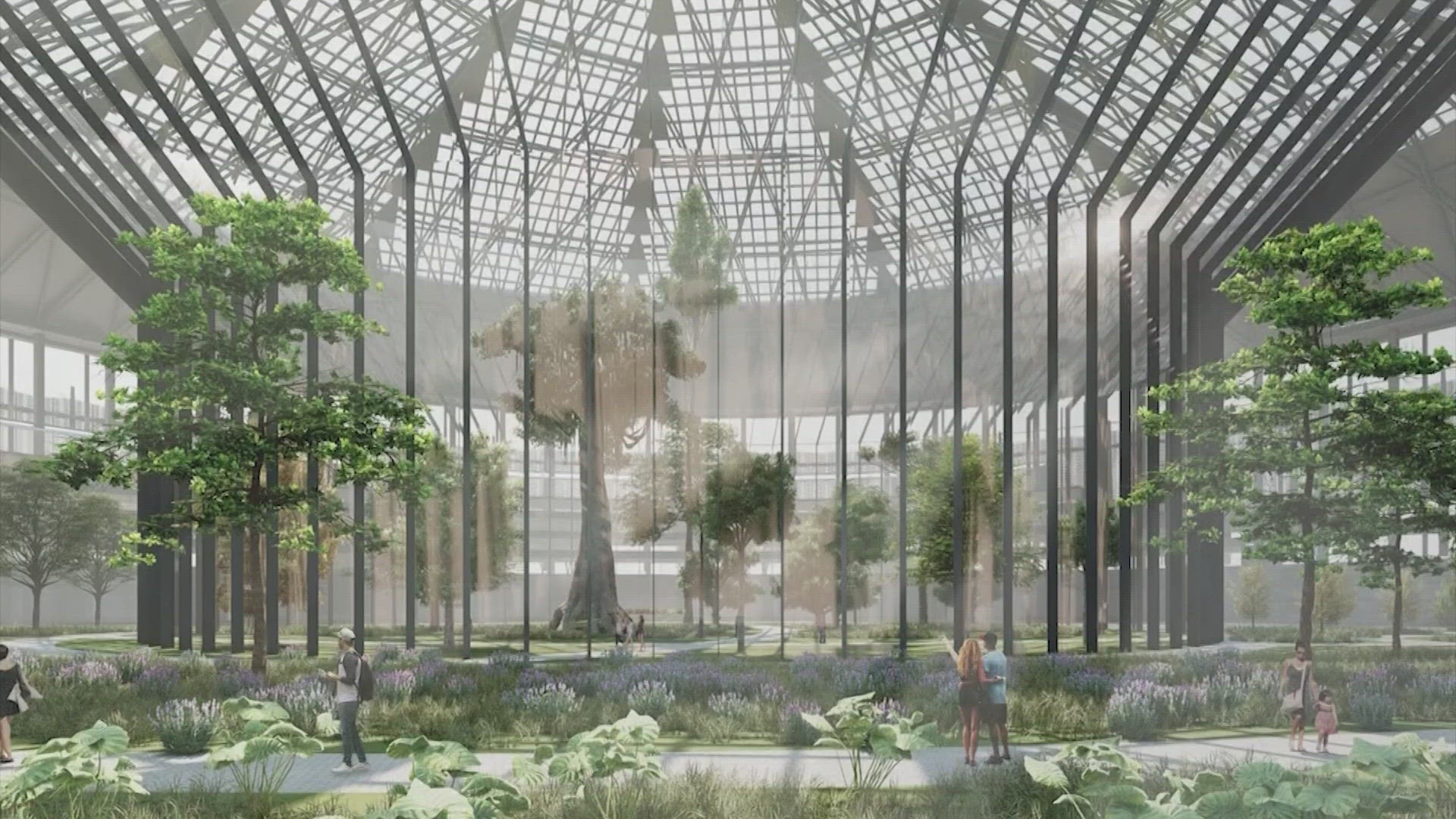A Sanctuary of Green: Exploring the Allure and Importance of Botanical Gardens

Botanical gardens, more than just picturesque landscapes filled with vibrant blooms, are multifaceted institutions playing a crucial role in conservation, education, and scientific research. They are living museums, breathing libraries of plant life, and havens of biodiversity in an increasingly urbanized world. From meticulously curated collections of rare and endangered species to sprawling landscapes showcasing the beauty of native flora, botanical gardens offer a unique experience that blends aesthetic appreciation with profound ecological significance.
A Historical Tapestry Woven with Flora:
The history of botanical gardens is deeply intertwined with the evolution of human understanding of the plant kingdom. While the modern concept of a botanical garden emerged during the Renaissance, its roots can be traced back to ancient times. The earliest examples can be found in the medicinal gardens of ancient Egypt, Greece, and Rome, where plants were cultivated for their healing properties. These gardens served as crucial resources for physicians and herbalists, allowing them to study and document the therapeutic uses of various plants.
During the Middle Ages, monastic gardens played a similar role, preserving and cultivating medicinal herbs for use in monastic infirmaries. The Renaissance witnessed a resurgence of interest in botany and natural history, leading to the establishment of the first true botanical gardens. These early gardens, often associated with universities, focused on the scientific study and classification of plants, rather than solely on their medicinal value. The Botanical Garden of Padua, founded in 1545, is considered one of the oldest academic botanical gardens in the world and continues to thrive today.
The Age of Exploration further fueled the growth of botanical gardens. As explorers and traders ventured into new territories, they brought back exotic plants from around the globe. These plants were cultivated in botanical gardens, allowing scientists to study their characteristics and potential uses. Gardens like Kew Gardens in London and the Jardin des Plantes in Paris became centers of botanical research and repositories of global plant diversity.
More Than Just Pretty Flowers: The Multifaceted Roles of Botanical Gardens:
The role of botanical gardens has evolved significantly over time. While aesthetic beauty remains an important aspect, modern botanical gardens serve a much broader range of functions:
- Conservation: Botanical gardens play a vital role in conserving plant biodiversity. Many gardens maintain collections of rare and endangered species, providing a safe haven for plants threatened by habitat loss, climate change, and other factors. They also participate in seed banking and propagation programs, helping to preserve genetic diversity for future generations.
- Research: Botanical gardens are centers of scientific research, contributing to our understanding of plant biology, ecology, and evolution. Researchers study plant adaptations, develop new methods for plant propagation and conservation, and investigate the potential uses of plants for medicine, agriculture, and other purposes.
- Education: Botanical gardens offer a wide range of educational programs for visitors of all ages. These programs promote plant awareness, teach about the importance of biodiversity, and inspire a love of nature. Gardens often host workshops, lectures, tours, and interactive exhibits that engage visitors and enhance their understanding of the plant kingdom.
- Horticulture: Botanical gardens are showcases of horticultural excellence. They demonstrate best practices in plant cultivation, display a wide range of plant species and varieties, and provide inspiration for home gardeners. Gardens often offer horticultural training programs and advice to the public.
- Recreation and Wellness: Botanical gardens provide a tranquil and restorative environment for visitors to relax and connect with nature. Studies have shown that spending time in green spaces can reduce stress, improve mental well-being, and promote physical health. Gardens offer a welcome respite from the hustle and bustle of urban life.

Exploring the Treasures Within: A Glimpse into a Botanical Garden:

A visit to a botanical garden is an immersive experience that engages all the senses. As you wander through the garden’s diverse landscapes, you’ll encounter a breathtaking array of plant life, from towering trees and delicate orchids to vibrant flower beds and serene water gardens.
Many botanical gardens feature specialized collections, such as:
- Arboretums: Dedicated to the cultivation and study of trees and shrubs.
- Conservatories: Glasshouses that provide a controlled environment for growing tropical and subtropical plants.
- Rock Gardens: Featuring plants that thrive in rocky environments.
- Herb Gardens: Showcasing plants with culinary, medicinal, or aromatic properties.
- Native Plant Gardens: Displaying plants that are native to the local region.
- Ethnobotanical Gardens: Highlighting the relationship between plants and human cultures.

In addition to plant collections, botanical gardens often feature other attractions, such as:
- Sculptures and Art Installations: Enhancing the aesthetic appeal of the garden.
- Water Features: Adding to the tranquility and beauty of the landscape.
- Visitor Centers: Providing information about the garden’s collections and programs.
- Cafes and Restaurants: Offering refreshments and meals.
- Gift Shops: Selling plants, books, and other botanical-themed items.
The Challenges and Future of Botanical Gardens:
Despite their importance, botanical gardens face a number of challenges, including:
- Funding: Botanical gardens often rely on grants, donations, and admission fees to support their operations. Securing adequate funding can be a constant struggle.
- Climate Change: Climate change poses a significant threat to plant biodiversity and the ability of botanical gardens to maintain their collections.
- Invasive Species: Invasive plants can outcompete native species and disrupt ecosystems. Botanical gardens must be vigilant in preventing the spread of invasive species.
- Public Awareness: Many people are unaware of the important role that botanical gardens play in conservation, research, and education.
Despite these challenges, the future of botanical gardens is bright. As awareness of the importance of biodiversity grows, botanical gardens are becoming increasingly recognized as essential institutions for preserving our planet’s plant heritage. By embracing new technologies, engaging with diverse audiences, and collaborating with other organizations, botanical gardens can continue to thrive and inspire future generations to appreciate and protect the plant kingdom.
FAQ: Your Questions About Botanical Gardens Answered
Q: What is the main purpose of a botanical garden?
A: While offering aesthetic beauty, the primary purpose of a botanical garden is multifaceted. It includes conservation of plant biodiversity, scientific research, education, horticultural demonstration, and providing a space for recreation and wellness.
Q: Are botanical gardens just for scientists?
A: Absolutely not! Botanical gardens are designed for everyone. They offer educational programs and exhibits tailored to different age groups and levels of knowledge. They are a place for families, students, tourists, and anyone interested in learning more about plants and nature.
Q: How do botanical gardens contribute to conservation?
A: Botanical gardens conserve plants through various methods, including maintaining collections of rare and endangered species, participating in seed banking and propagation programs, and conducting research on plant conservation strategies.
Q: What can I expect to see on a visit to a botanical garden?
A: You can expect to see a diverse range of plant life, from native species to exotic imports. Many gardens have specialized collections, such as arboretums, conservatories, and themed gardens. You might also encounter sculptures, water features, and educational exhibits.
Q: How can I support a botanical garden?
A: There are many ways to support botanical gardens, including becoming a member, making a donation, volunteering your time, attending events, and spreading awareness about the garden’s mission.
Q: Are botanical gardens only found in big cities?
A: No, botanical gardens can be found in a variety of locations, from large urban centers to smaller towns and rural areas. They vary in size and scope, reflecting the local environment and resources.
Q: What is the difference between a botanical garden and a park?
A: While both offer green spaces, botanical gardens are specifically focused on plant collections and research, often with a scientific or educational mission. Parks, on the other hand, are generally designed for recreation and may have a wider range of amenities.
Q: Do botanical gardens only focus on flowering plants?
A: No, botanical gardens typically include a diverse range of plant life, including trees, shrubs, ferns, mosses, and even algae. They aim to represent the breadth and diversity of the plant kingdom.
Q: Are botanical gardens affected by climate change?
A: Yes, climate change poses a significant threat to botanical gardens. Rising temperatures, altered precipitation patterns, and increased frequency of extreme weather events can impact plant health and survival. Gardens are actively working to adapt to these changes and mitigate their effects.
Q: Can I learn about gardening techniques at a botanical garden?
A: Yes, many botanical gardens offer workshops, classes, and demonstrations on gardening techniques. They can provide valuable information on plant selection, soil preparation, pest control, and other aspects of horticulture.
Conclusion: Cultivating a Future of Green
Botanical gardens stand as vital institutions in a world facing increasing environmental challenges. They are not merely repositories of plants, but dynamic centers for conservation, research, and education. By connecting people with the beauty and importance of the plant kingdom, they inspire a sense of stewardship and promote a more sustainable future. Whether you’re a seasoned botanist, a budding gardener, or simply someone seeking a peaceful escape, a visit to a botanical garden is an enriching experience that will deepen your appreciation for the natural world and the vital role plants play in our lives. So, take the time to explore your local botanical garden and discover the wonders that await within its verdant embrace. Let us cultivate a future where botanical gardens continue to flourish, safeguarding our planet’s plant heritage for generations to come.
